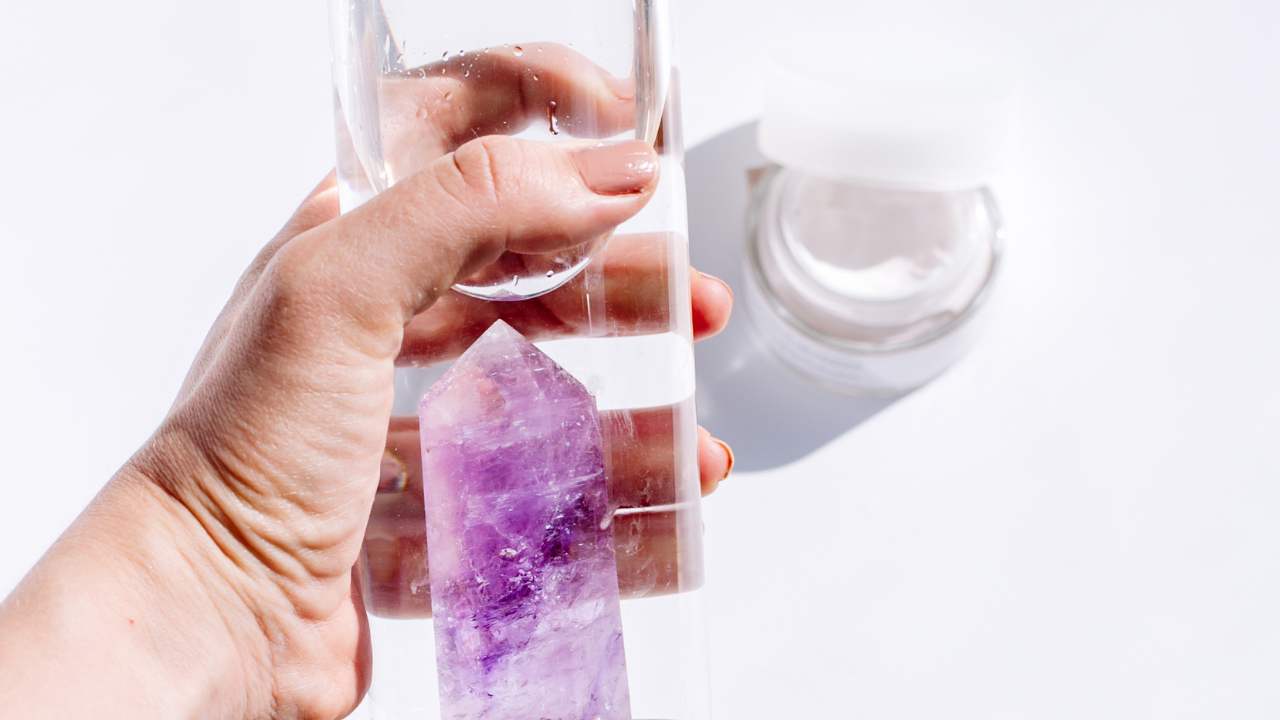As someone who’s fascinated by the intersection of wellness trends and science, the concept of crystal-infused water bottles has definitely piqued my curiosity.
These bottles, typically made of glass, contain crystals that are believed by some to impart their energy into the water we drink. You might see them adorned with amethysts, rose quartz, clear quartz, or a mix of other “healing” stones. The prevailing thought is that by drinking the water that’s been in contact with these crystals, you could soak up some of the stones’ reputed benefits.
Now, I’m open-minded yet skeptical. I understand the allure of these beautifully crafted bottles and the comforting ritual of choosing a crystal that aligns with your intentions or desired healing properties. But let’s talk about whether they actually work in the sense of providing health benefits beyond what you’d get from staying hydrated with plain water.
Scientifically speaking, there’s no evidence that water can hold onto the ‘energy’ of crystals or that this energy can have a physiological effect on our bodies. Water is indeed a fantastic solvent and is known for its ability to dissolve certain substances, but the transmission of metaphysical properties isn’t something that’s supported by the framework of modern science.
But that doesn’t mean there isn’t a place for crystal-infused water bottles in someone’s life. The human aspect of belief and the placebo effect are powerful. If you believe that your rose quartz is bringing you love and peace, and you feel calmer or happier sipping water that’s been in its presence, who’s to say that isn’t a form of ‘working’? After all, mental and emotional well-being are critical components of overall health.
However, using these bottles comes with some caveats. First and foremost, safety is key. Not all crystals are safe to dunk in your drinking water. Some can dissolve, release harmful substances, or are toxic to ingest even in tiny amounts. So, if you’re set on using a crystal-infused water bottle, you should do so with crystals that are known to be non-toxic and ensure that both the bottle and the crystals are kept clean to avoid bacteria build-up.
Another point to consider is the environmental and ethical aspects of using crystals. The mining of crystals isn’t always an eco-friendly or ethical practice. If you’re considering purchasing such a bottle, you might want to research where the crystals are sourced from and choose a company that prioritizes sustainability and fair labor practices.
In the end, it’s a personal choice. I’m all for whatever supports individual well-being and brings joy—whether it’s the physical act of drinking more water because your bottle is aesthetically pleasing, or the mental comfort you find in a sparkling piece of earth’s natural beauty. While I might not expect these bottles to work miracles in the traditional sense, there’s something undeniably special about the practice if it brings a sense of healing and harmony to your day.
It’s the meaning we attach to objects and rituals that often provides the true “magic” in our lives. If a crystal-infused water bottle encourages someone to drink more water and cultivates a moment of mindfulness or self-care, then perhaps, in a way, it does “work.” But it’s important to temper these expectations with a healthy dose of reality and scientific understanding. Drinking from such a bottle is unlikely to produce tangible health benefits beyond hydration and the placebo effect, but if it serves as a daily reminder of one’s intention to live a healthier, more balanced life, that in itself is a positive outcome

